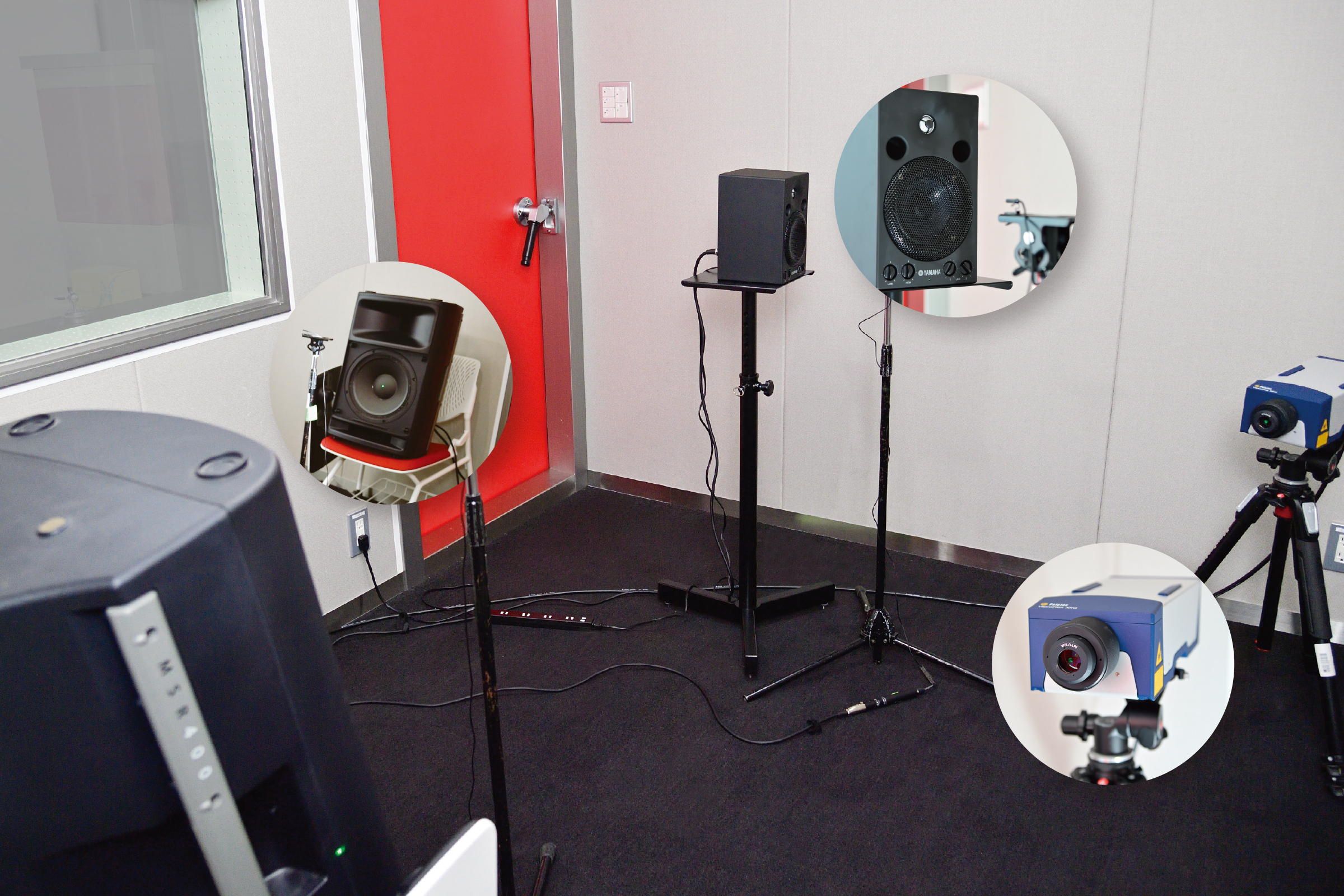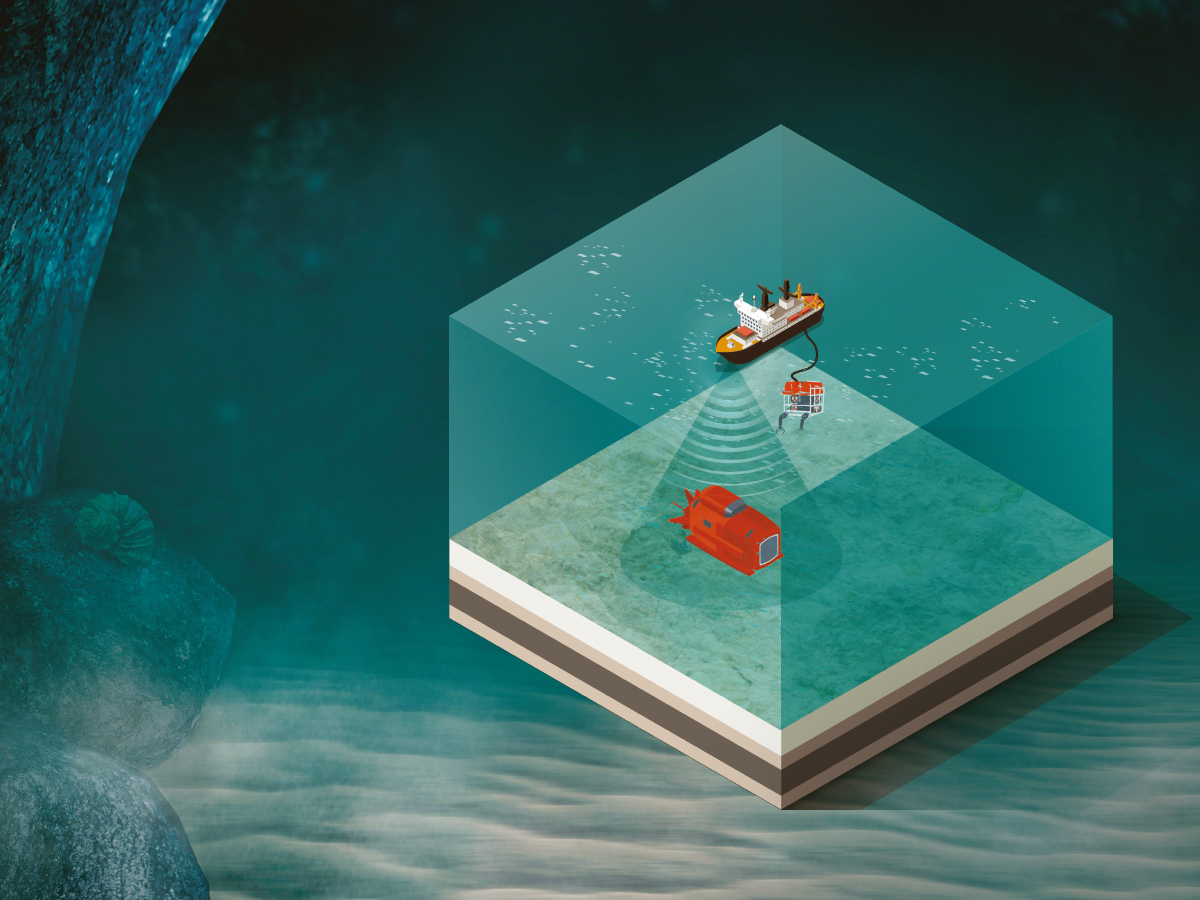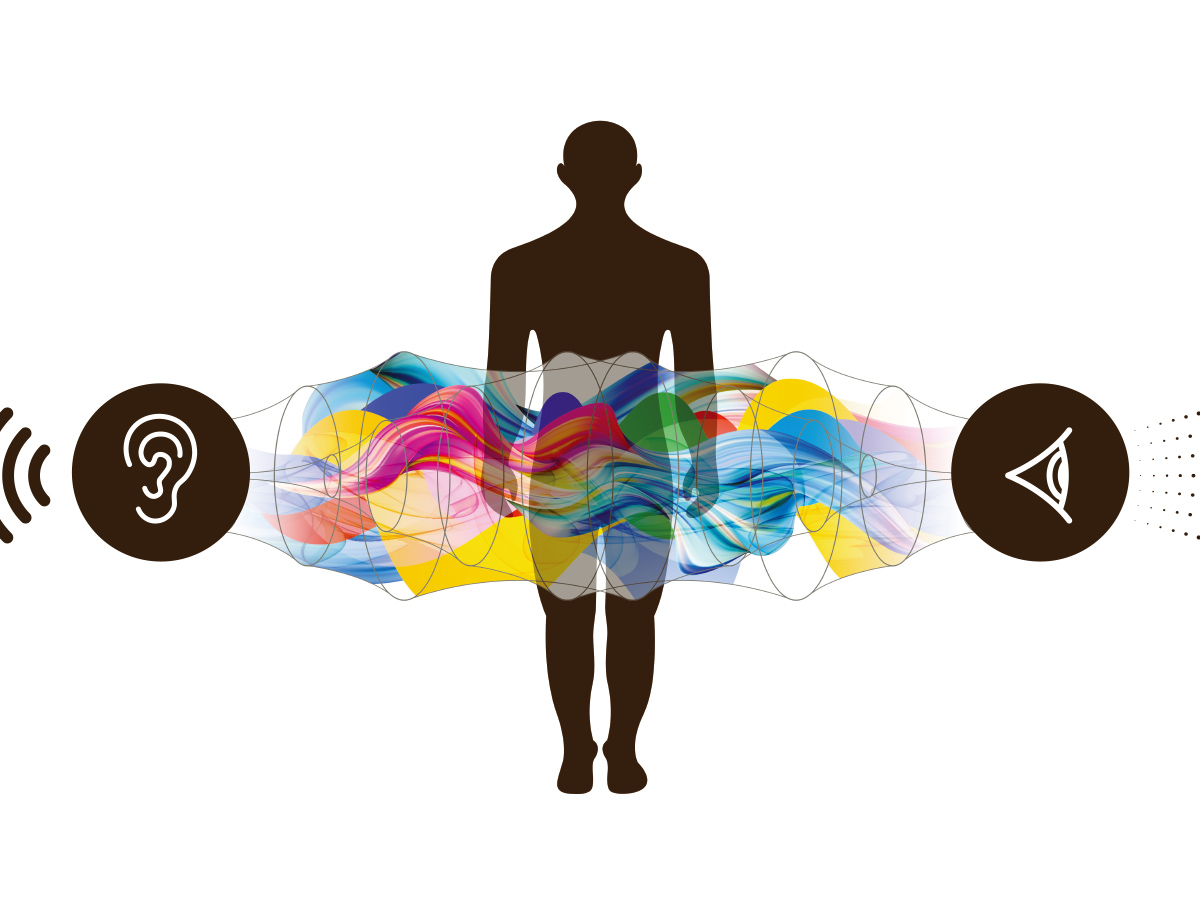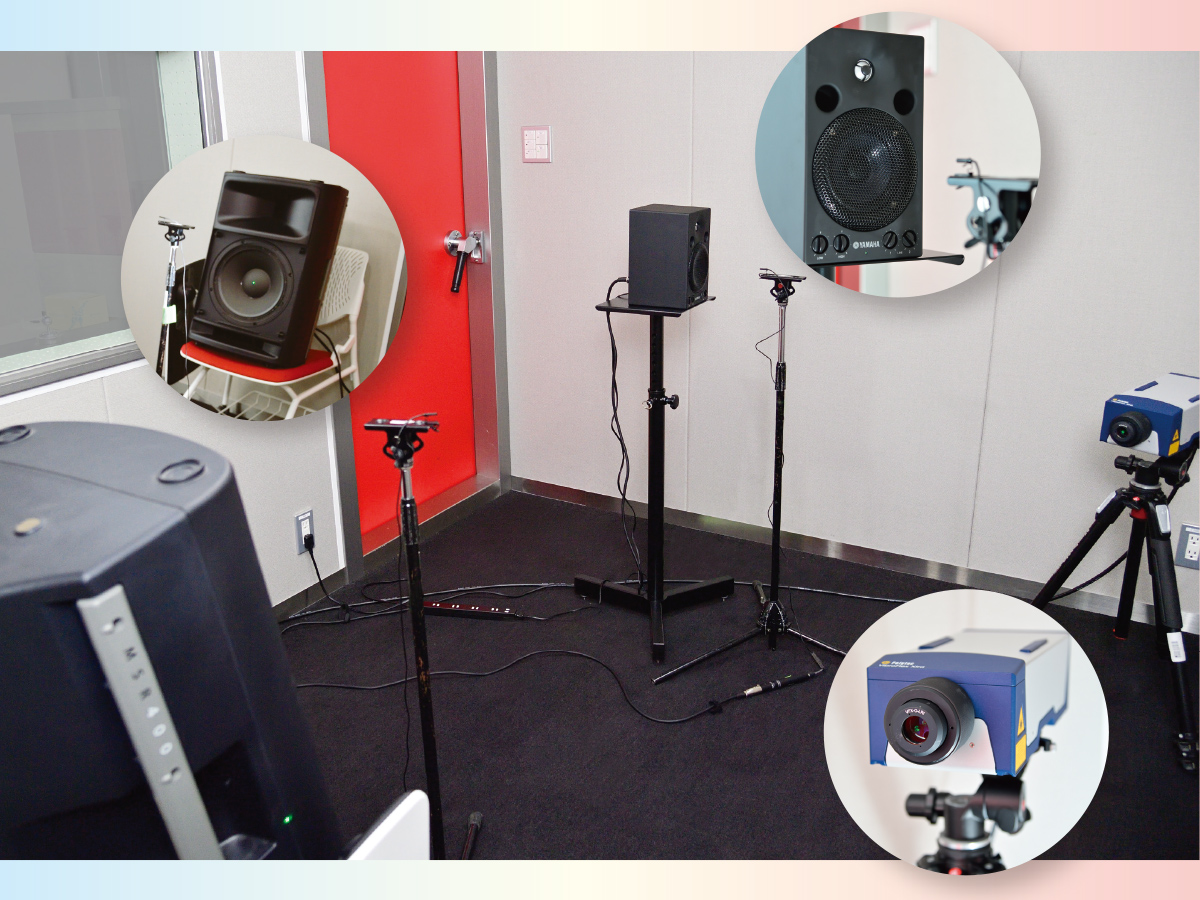STORY #5
Controlling Sound and
Cancelling Noise
Kenta Iwai, Ph.D.
Assistant Professor, College of Information Science and Engineering
Reducing Background Sounds,
Noises, and Echoes through
Acoustic Signal Processing
Pleasant sounds and beautiful music soothe the soul. However, a cacophony of sounds and disturbing noises not only make people uncomfortable, but in extreme cases they may even harm one’s health. There are many noise-related problems in our society, such as factory noise and traffic noise.
To reduce such noise, Assistant Professor Kenta Iwai, College of Information Science and Engineering, is researching Active Noise Control (ANC). ANC reduces noise by countering it with sound waves which possess the same amount of energy but the opposite phase. In other words, it cancels out noise with an equal and opposite sound. “There are different ways of reducing noise, including passive noise control (PNC), which physically blocks sound with such methods as using earplugs and soundproofed walls. However, it is difficult to control low-frequency sounds using such methods. In contrast, the advantage of ANC, which uses signal processing technology, is that not only can it control low-frequency sounds, but when combined with PNC it can control a wider range of sound,” Iwai explains. With his recent research, Iwai has proposed a novel and unprecedented method that makes use of the feedforward ANC system.
Discussing its mechanism, he says, “The feedforward ANC system consists of a reference microphone that measures noise, an error microphone that measures noise reduction, and a secondary source speaker that emits a pseudo-noise (anti-noise) to cancel the noise. The reference microphone captures sound from the source of the noise and the secondary source speaker emits the pseudo-noise generated by the controller inside the system to reduce the noise. Simultaneously, the sound from the noise source (error signal) at the point where the noise is to be eliminated (control point) is picked up by the error microphone and sent to the controller to derive the correlation of the control signal.” The noise reduction performance will significantly deteriorate if the causality between the noise and pseudo-noise that collide at the control point is not satisfied. The problem is that if the propagation time from the reference microphone to the error microphone is delayed until the noise reaches the error microphone, the computation time at the controller becomes shorter, making it more difficult to satisfy the causality.
To resolve this problem, Iwai proposed a solution: an unprecedented system that uses an optical laser microphone for the reference microphone. “An optical laser microphone indirectly measures sound by irradiating an optical laser beam onto the surface of an object—the sound source—and calculates the vibration velocity of that object based on the reflected light,” Iwai explains. The advantage of laser light is its overwhelmingly superior speed over sound waves. The use of laser lights could reduce the propagation time for delivering noise to the error microphone and alleviate causality constraints.
However, this idea also comes with its challenges. An optical laser microphone can only obtain the vibration speed of an object, and this does not share the same frequency characteristics as that of acoustic signals. Iwai’s idea to resolve this problem was to insert a filter that converts the first-order differentiation of the velocity signal acquired with the optical laser microphone into an acceleration signal.
Iwai conducted computer simulations based on the pathways identified by ANC systems using actual optical laser microphones. The simulation confirmed that a sound reduction performance similar to that of a normal feedforward ANC system could be achieved.
These findings were received very well at international conferences. Going forward, he is considering enhancing its performance by improving the filter’s signal processing method.
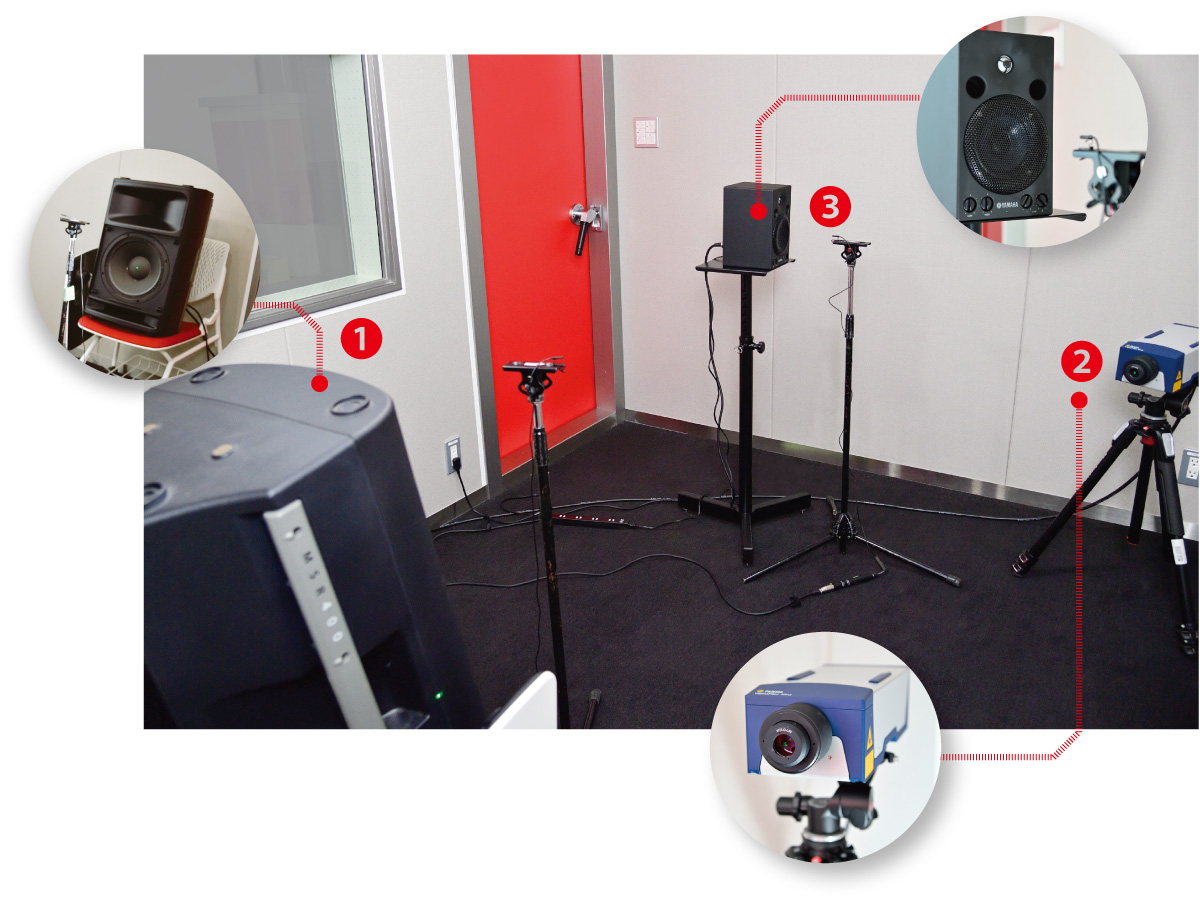
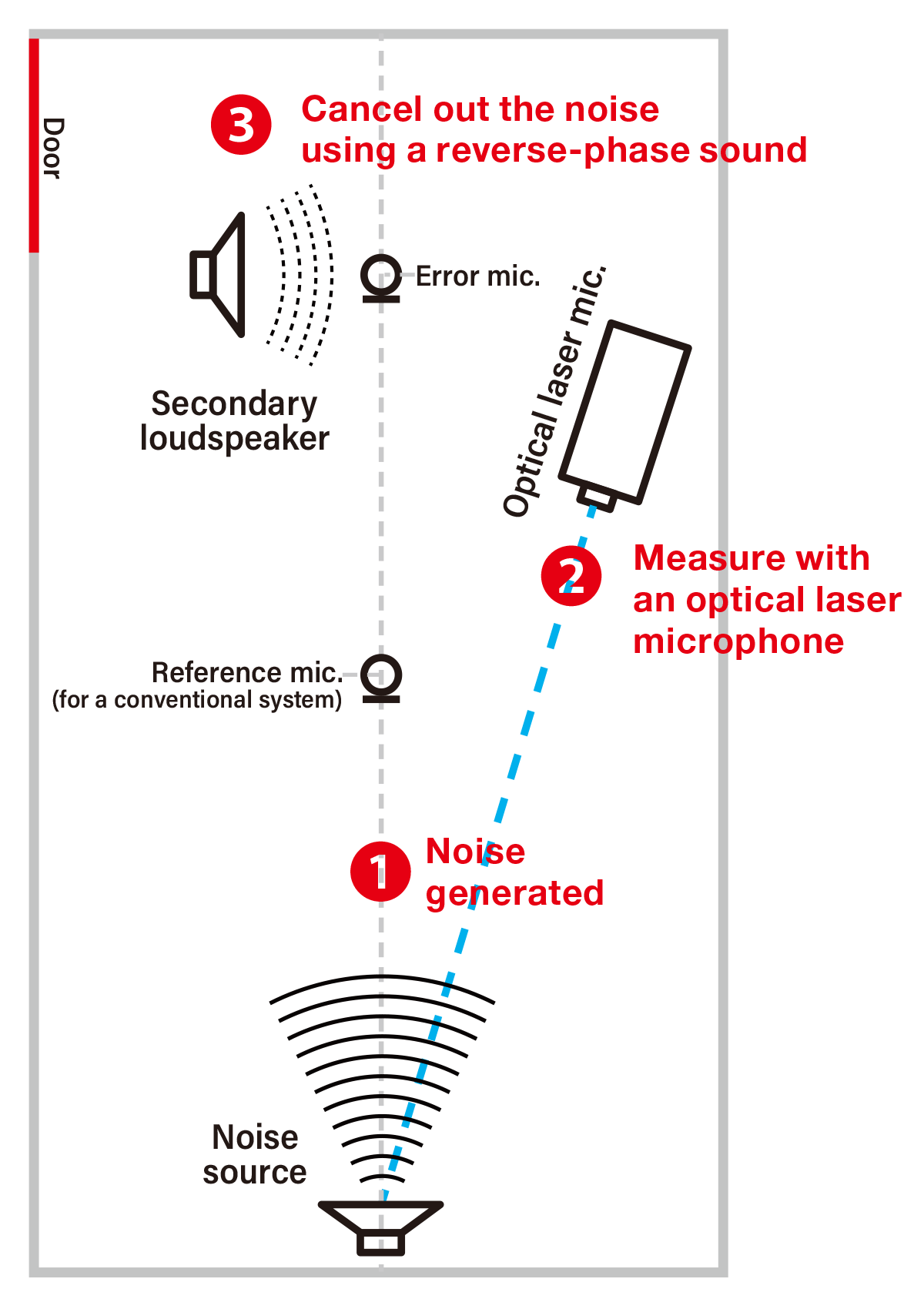
In the meantime, Iwai is also researching methods to improve the sound quality of speakers. When people communicate through speakers, the spoken words occasionally bounce back as an echo, which makes talking difficult. What suppresses the acoustic echoes during conference calls and conversations using speakers is the acoustic echo canceller. “The mechanism that suppresses acoustic echoes uses an adaptive filter to estimate the path of the echoes, and then they bombard the echoing sounds with components that cancel them out. However, the conventional acoustic echo canceller cannot sufficiently suppress echoes in the presence of sound crackling. This is due to nonlinear distortions, as crackling cannot be modeled,” Iwai points out.
Generally, the solution for the above issue is using an Adaptive Volterra Filter. “However, Volterra filters have a disadvantage, as they require intensive computational powers to calculate the nonlinear distortion, and those calculations are time-consuming,” explains Iwai. Thus, he has proposed to combine a nonlinear second-order IIR filter with the conventional acoustic echo canceller.
“The nonlinear second-order IIR filter is a digital filter for reducing nonlinear distortion in electrodynamic speakers. If we can model the nonlinear distortion with this, all we will have to do is to use the conventional acoustic echo canceller to reduce the echoes,” says Iwai. With this method, he declares, it is possible to produce a distortion that cancels out echoes much faster and with a significantly lighter computational load than using the Volterra filter. Results of verification experiments using computer simulations also elucidate that it is possible to realize an echo suppression amount equivalent to or greater than the conventional system with a light computational load.
Reducing unpleasant sounds, improving sound quality to enhance pleasant sounds, and controlling “noise” will make society and life more comfortable. Aiming to implement his findings in society, Iwai is determined to continue with his research in the future.
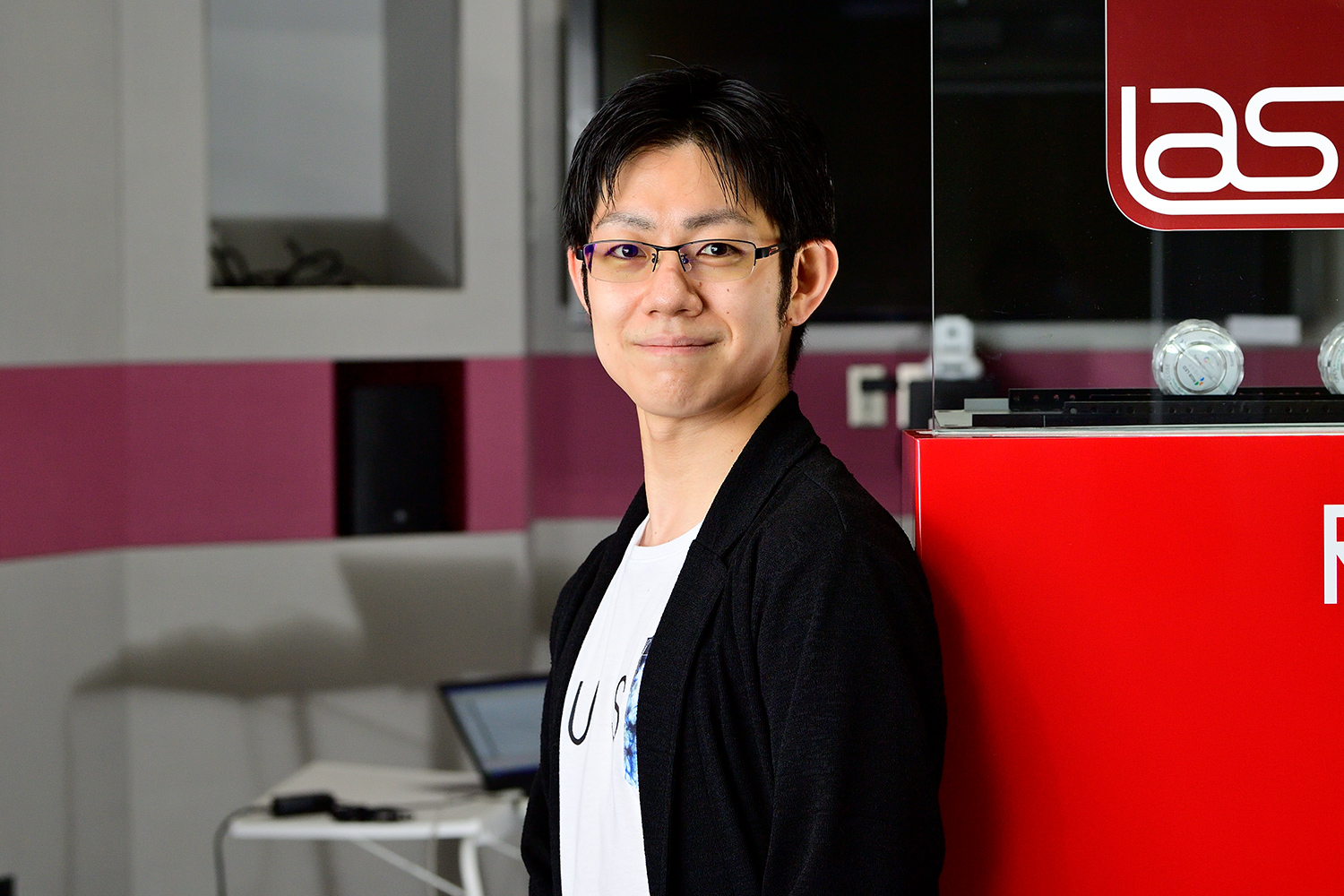
- Kenta Iwai, Ph.D.
- Assistant Professor, College of Information Science and Engineering
- Specialties: Perceptual information processing; Mechanics and control; Control and system engineering
- Research Themes: A study on the discomfort reduction of the noises by active noise control; A study on improving the sound quality of the acoustic transducers by nonlinear digital filter; Improvement of nonlinear acoustic echo cancellers by nonlinear recursive filter; Auditory masking
